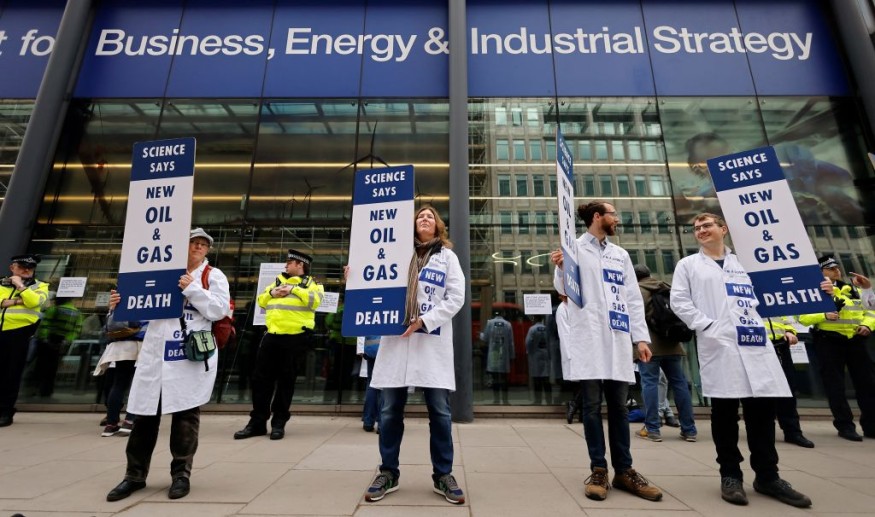Scientists staged peaceful demonstrations in multiple cities across the globe, demanding state leaders take more stringent measures against climate change and the destruction of the environment.
However, some protests have met with a violent response, including arrests, from security forces.
Climate Change Protests

Thousands of scientists held non-violent civil disobedience in 25 countries worldwide for the past several days after the Intergovernmental Panel on Climate Change (IPCC) released its latest report on April 4, warning it is "now or never" that greenhouse gas emissions must be significantly decreased by 2025 to avoid catastrophic climatic repercussions.
The demonstrating scientists refer to the IPCC report, highlighting that there is no turning back if state leaders and industries continue to generate the insurmountable amount of greenhouse gases (GHG) into the atmosphere, which speeds up the process of the greenhouse effect that warms up the planet.
In particular, the climate change demonstrations are denouncing the fossil fuel economy, seeking its stoppage, and suggesting alternative measures that will not be detrimental to the world's natural habitats, including marine ecosystems and forests.
Global Civil Disobedience
Dozens of related protests were reported since last week, as some protesters were seen carrying placards showing their denunciation against new oil and gas and intentionally causing widespread disruption to travel and businesses as a form of a message to their respective governments.
In the United States, protesters reportedly chained themselves up to the White House fence in Washington D.C., and some scientists, including NASA climate scientist Peter Kalmus, in Los Angeles did the same thing at the JP Morgan Chase compound.
Kalmus stated that scientists have long been ignored for decades, emphasizing that the emission of fossil fuels, which include GHG such as carbon dioxide, nitrous oxide, and methane, must be stopped or we will lose everything, as per the the Smithsonian Magazine.
In spite of the peaceful demonstration in Los Angeles, around 100 police officers in riot gear arrested the protesters.
In the UK, scientists gathered outside the Department for Business, Energy, and Industrial Strategy, a government agency responsible for regulating GHG in the country.
Some of the demonstrators passed page excerpts of scientific papers to the windows of the said agency, as per The Guardian.
A number of protesters were also seen storming the Shell headquarters with some throwing fake oil on the giant oil company's building.
Related protests occurred in other countries, including Panama where scientists staged rallies outside various embassies; Germany where protesters glued themselves to a bridge; and Malawi where demonstrators held a teach-in protest at the Lilongwe University of Agriculture and Natural Resources.
Scientist Rebellion and The Paris Agreement
Ph.D. students in Scotland established Scientist Rebellion, which was inspired by the Extinction Rebellion, a group known for its disruptive climate protests in London and other countries by gluing themselves to various transport infrastructures, including trains, and establishments.
Both groups have the same advocacies against mitigating the effects of climate change and global warming by 2025, which is also the goal of the UN-led Paris Agreement that aims to decrease the global temperature to 1.5 degrees Celsius, as per the UN.
The agreement is also known as the Paris Treaty, the Paris Climate Agreement, or the Paris Climate Accords, where member countries are required to implement concrete measures to decrease GHG emissions.
© 2025 NatureWorldNews.com All rights reserved. Do not reproduce without permission.





